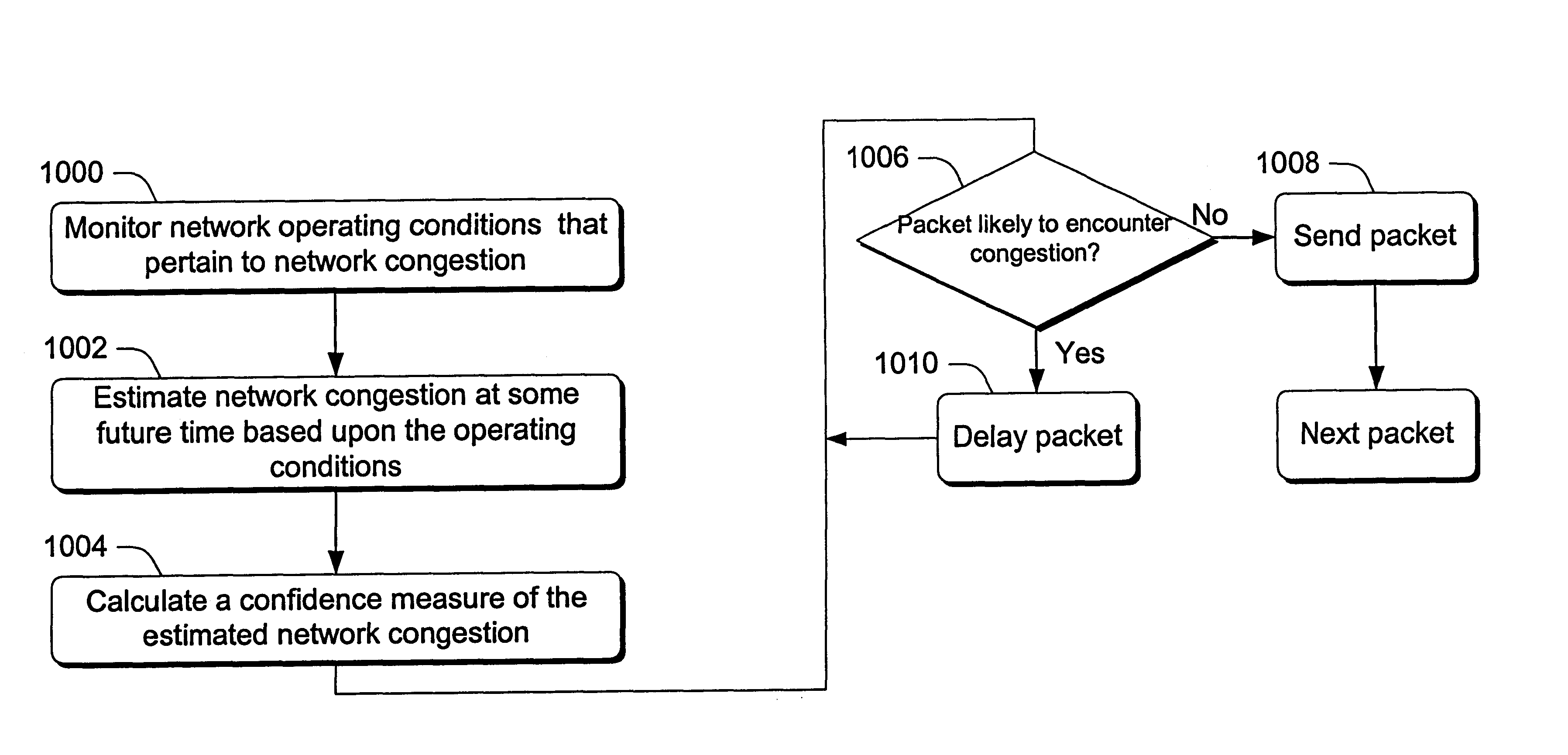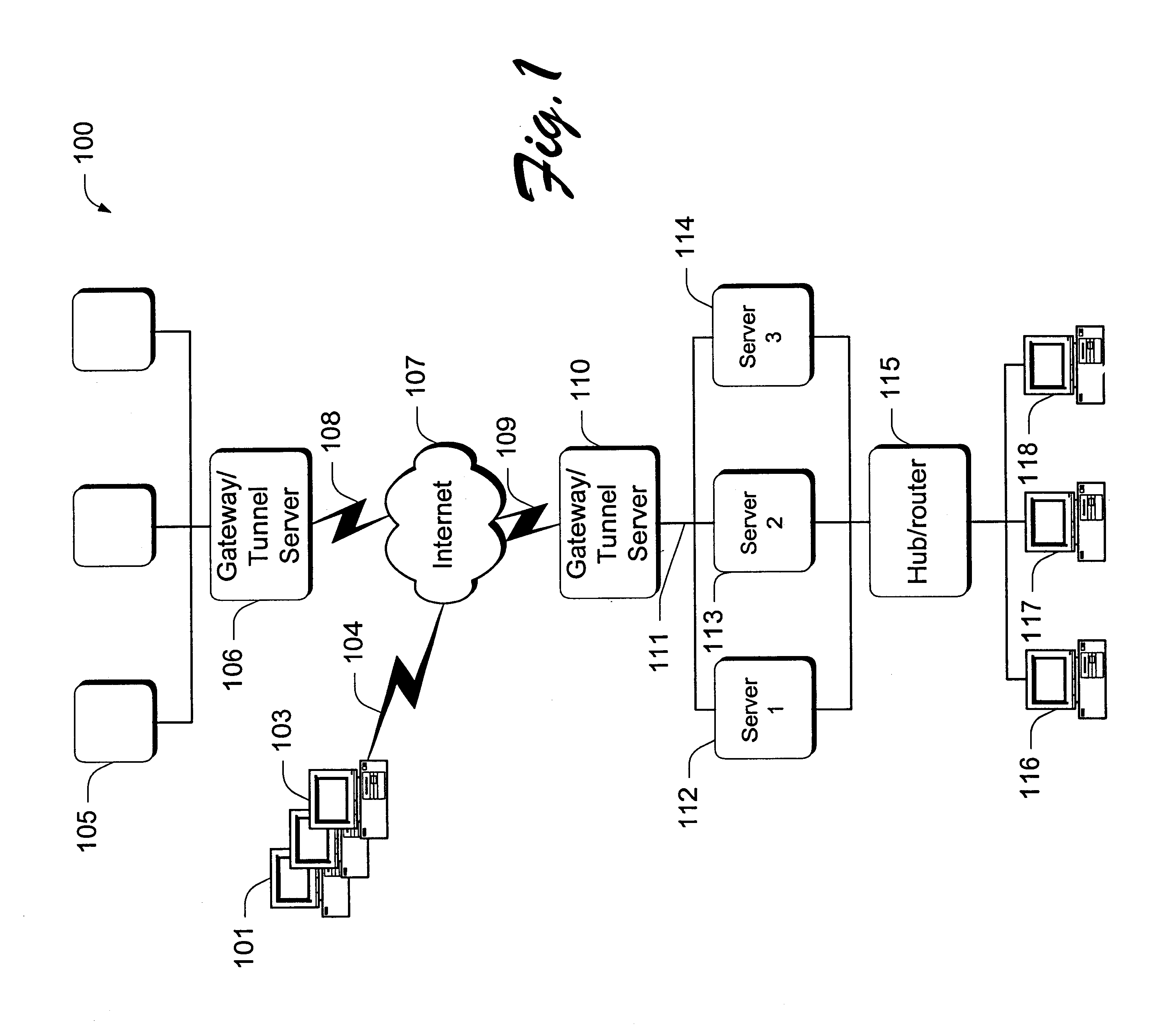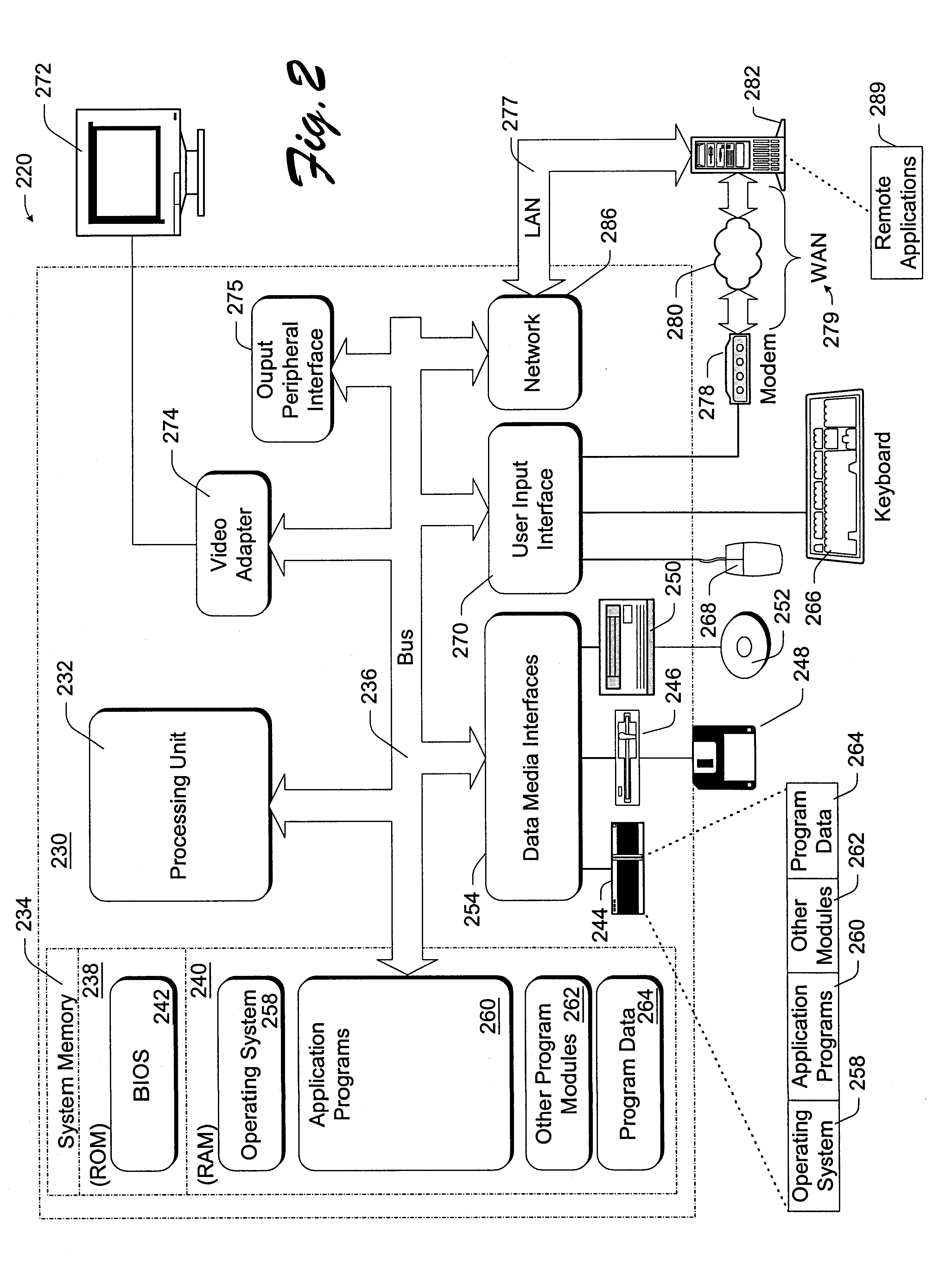Methods and systems for alleviating network congestion
a network congestion and network technology, applied in the field of methods and systems for alleviating network congestion, can solve the problems of data traffic over networks that is susceptible to congestion, delays increase, and congestion simply means an increase in delay or packet loss
- Summary
- Abstract
- Description
- Claims
- Application Information
AI Technical Summary
Problems solved by technology
Method used
Image
Examples
Embodiment Construction
Overview
Methods and systems for detecting and predicting congestion patterns from network feedback are described. In the inventive embodiments, network feedback in the form of binary feedback messages is received. The network feedback can comprise any suitable feedback messages and, in the illustrated and described embodiments comprise packet loss events or ECN marks, to name just a few. The feedback can be received by relying on the return path of TCP if, for example, loss events or ECN marks are used. The inventive embodiment uses the network feedback to predict when congestion is likely to occur in the future. Based on these predictions, the behavior of end users within the system can be modified so that congestion is reduced. Specifically, the data packets that are typically transmitted by the end users can be delayed until such a time when the predicted congestion is mitigated. Thus, the inventive systems and methods take a predictive, proactive approach to addressing network c...
PUM
 Login to View More
Login to View More Abstract
Description
Claims
Application Information
 Login to View More
Login to View More - Generate Ideas
- Intellectual Property
- Life Sciences
- Materials
- Tech Scout
- Unparalleled Data Quality
- Higher Quality Content
- 60% Fewer Hallucinations
Browse by: Latest US Patents, China's latest patents, Technical Efficacy Thesaurus, Application Domain, Technology Topic, Popular Technical Reports.
© 2025 PatSnap. All rights reserved.Legal|Privacy policy|Modern Slavery Act Transparency Statement|Sitemap|About US| Contact US: help@patsnap.com



